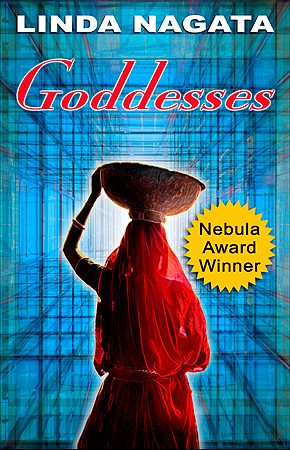Michael Fielding is the newly appointed site director of the Four Villages project in rural India, tasked with guiding the economic development of the region. But a chance encounter with an ailing, homeless, and very young widow plunges him into the maze of an ossified and violent traditional culture, while putting his own career at risk.
On the other side of the world, Cody Graham’s hazardous waste cleanup company, Green Stomp, has earned a reputation for tackling the toughest, dirtiest jobs around. The harder the challenge, the more Cody likes it. But when chance—and the polluted ground water of Four Villages—brings Michael back into Cody’s life, both are forced to question their shared past, their values, and what it means to do good in the world.
This book was a change of pace for me. It’s science fiction, but takes place on a near-future Earth much like our own. In fact, the two driving elements of the story (infertility and economic development) are such contemporary issues that at points, I felt I was reading a piece of mainstream literature.
The writing is quite good, both on a technical and an artistic level. The storytelling is a little slower, but the character development is very well done, especially for Rajban, the native Indian girl whom Michael takes in and rescues. The parts from her point of view made me think a bit about my friends who did micro-finance after graduation; I think they would like her story a lot.
As a writer, one thing that interested me was how Nagata started off with a whole bunch of flashbacks and actually pulled it off. They tell you never to do this, but she made it work by grounding those scenes with clear action and a relatable conflict (childbirth, for example), all in the first couple of paragraphs. There were a couple of parts that confused me, but overall I think she handled it very well.
The ending was a bit ambiguous, which was dissatisfying in some ways but in other ways fit the story much better than a clean wrap-up. The story raises some very thought provoking questions about tradition and modernity, and a more definitive ending would probably have ruined a lot of that. But still, I wish I knew what happened to some of the characters after the end.
Overall, I’d give this book four stars. If you enjoy science fiction but you’d rather read something grounded in the real world, you’ll probably enjoy this book. If you’re interested in the developing world at all, I’d highly recommend it.
